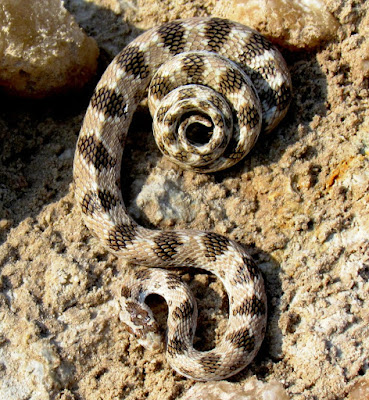Beachcombing
During the
recent Inter-Emirates Weekend 2018, the ENHG’s Bish Brown Award was given to a
husband-wife ‘team,’ Keith and May Yoke Taylor, who flew back from Hungary,
where they now live after 17 years in the Emirates. The award was created to
grant recognition to people who have contributed in a significant way to the
promotion of public awareness of natural history through their efforts with the
ENHG’s various groups. Keith and May Yoke were extensively involved in ENHG Abu
Dhabi; in the below poem, ‘Beachcombing,’
which Keith has graciously allowed us to post here, he describes the ENHG as
being composed of nature-loving people who are a ‘community that has claimed me
for life.’
Of the couple’s history within the group, he wrote:
Of the couple’s history within the group, he wrote:
In the course of our excursions in
this region, the two of us developed into something of a writer/photographer
team, using the medium of the ENHG-Abu Dhabi’s Focus newsletter to record and report our natural history
observations, following in the tradition that Bish Brown and his collaborators
established over 40 years ago. I
especially treasure the delight that May Yoke’s photographs brought to so many.
I call to mind a number of her stunning Focus
covers: resident & migrating birds, snakes, lizards, insects and a
prize-winning Desert Hyacinth among them. One of her snakes – a coiled-up Crowned Leaf-nosed snake near Sila – was the
westernmost recording of that species to date: a useful bit of database
information, according to herpetologist & former ENHG-Abu Dhabi Chair Drew
Gardner.
 |
| Photo credit: May Yoke Taylor |
One of the things that brought me the
most immense satisfaction from my service to the ENHG-AD Committee was being in
a position to consult on issuing grants for conservation and research projects
in this region. Among the projects funded were those focused on the
conservation of endangered Arabian Leopards in Yemen and an endangered breed of
kingfishers in the UAE, on the analysis of key clues to the patterns of human
settlement in the archaeological record—and on the permanent storage, in a
climate controlled cabinet, under the
curatorship of former ENHG-Al Ain Chair Brigitte Howarth, of the Joint Al Ain and Abu Dhabi Emirates
Natural History Group Insect Collection, which comprises a four-decade-long continuous natural
history record, including valuable insect specimens collected by Bish
Brown and others. My wife and I value the personal enrichment on so many levels
that our involvement with this Group has brought us, and we both deeply
appreciate being granted the Bish Brown Award for 2017.
During the IEW, Keith attended the
beachcombing trip that was led by our Chair, Arabella Willing, which he
describes below.
On Saturday morning, Feb 24th,
ENHG-AD Chair and Park Hyatt Abu Dhabi Hotel and Villas Marine Biologist
Arabella Willing led over a dozen of us on an eye-opening natural history
stroll on that hotel’s stretch of beach on Saadiyat Island, supplied with
laminated Beach Bingo cards displaying a grid of shells, seaweed and other bits
and bobs to identify. Our cheerful guide opened windows on the tapestry of life
with the various objects brought to our attention as we strolled the beach
while the younger children splashed in Gulf waters alongside. One highlight was
a round “solitary coral polyp”, no greater in diameter than a small fingernail.
The smooth back of this polyp was punctured by a small hole: the residence, we
were told, of a trumpet worm, which had used the hollow interior of the polyp
for shelter while it fed on and cleared the coral of potentially lethal algae –
one of those amazing examples of symbiosis that exploration of the natural
world at times reveals. And from strands of intermingled seaweed, Arabella
picked out tiny bits of sea grass, a land plant that had migrated back to sea,
to form the staple diet of dugongs, who were themselves descendants of land
mammals that had migrated back to sea; the mass of thready seaweed was algae
that had never left the water, though it hugged the shore. This discussion
brought up a discussion of the complicated evolutionary journeys of (sea)
turtles and (land) tortoises, whose ancestors had made one more trip into or
out of the sea than marine mammals had, apparently.
Conversations on this IEW beach
ramble with fellow beachcombers both long-settled in and recently arrived in
the UAE, some quite new to the ENHG, revealed the continuing strength of this
Group; one mother spoke of the rare opportunity it has given to her children to
have so many direct contacts with the natural world in such a welcoming
multicultural community while living essentially isolated urban lives. Some of
these children may, in fact, follow in the footsteps of professional
environmental scientists who have been nurtured by such nature societies around
the world.
The experience led him to write the poem, ‘Beachcombing.' Thank you, Keith!
Footnotes for the poem:
* See this article: https://www.mpi-bremen.de/en/Discovery-of-a-unique-symbiosis-between-bacteria-and-a-marine-worm.html
** The literal meaning of the name of Saadiyat Island, which is just
off Abu Dhabi Island, where marine biologist and ENHG-AD Chair Arabella Willing
is now employed by the Park Hyatt Abu Dhabi Hotel and Villas as a turtle
conservationist and eco-tour leader.
*** From the ‘O wayfarer…’ passage in Gleanings from the Writings of Bahá'u’llah (Wilmette:
Bahá’í Publishing Trust, 1983), CXXIX, pp. 279-90.


Comments
Post a Comment